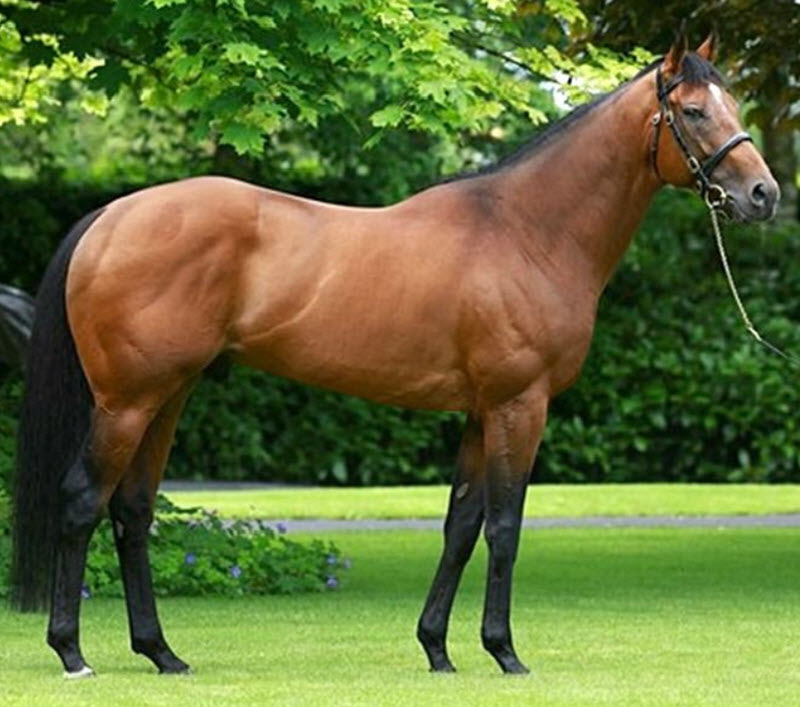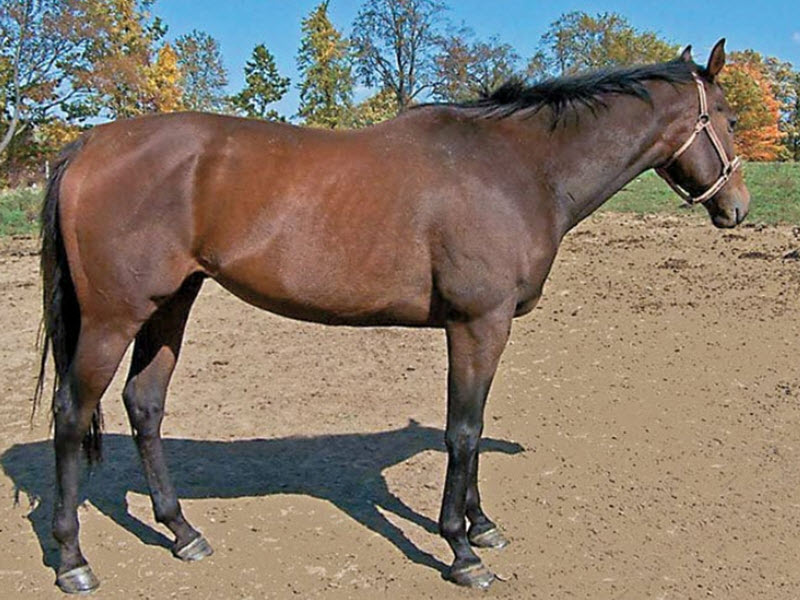Contents
The Thoroughbred is an English horse breed known for being tall, slim and athletic; highly capable of both ample speed and remarkable agility. It is a very common choice for activities such as horse racing, show jumping, fox hunting, dressage, and horse polo.
The thoroughbred is a so-called “hot-blooded” horse breed and often described as high spirited.

Breed characteristics
Size: The typical thoroughbred is 15.2-17.0 hands.
Shape: Overall, the body of a thoroughbred should have a lean appearance. The desirable body shape includes high withers, a deep chest, a short back, and long legs. Good depth of hindquarters is very important. The neck is long and the head well-chiselled.
Colour: The most common colours for thoroughbreds are brown, chestnut, bay, dark bay, grey, and black.
Coat patterns: Coat patterns with more than one colour on the body are not recognized by any of the main thoroughbred registries.
Background
This horse breed was created in England in the 1600s and 1700s by letting imported Arabian, Barb and Turkoman stallions breed with British mares.
The number of foundation mares is quite high, while there are only three recognized foundation stallions. These stallions are The Byerley Turk (1680s), The Darley Arabian (1704) and The Godolphin Arabian (1729). All modern-day registered thoroughbreds can trace their lineage back to at least one of these three stallions, who were imported to Europe from the Middle East.
Foundation stallions
The Darley Arabian has been especially influential, and one genetic study showed that 95% of the tested male thoroughbred horses traced their direct male line (via the Y chromosome) back to Darley Arabian.
For more information, visit Newscientist.com/article/dn7941-95-of-thoroughbreds-linked-to-one-superstud/
In addition to these three “super studs”, several other stallions have contributed to the development of the breed. Some examples of notable stallions are Leedes Arabian, Alcock´s Arabian, the Brownlow Turk, D´Arcy´s White Turk, and Curwen´s Bay Barb. From what we can surmise based on historical records, at least 160 stallions of Oriental ancestry were used in the creation of the thoroughbred breed. Roughly half of them were Arabians, around one quarter Barb horses and another quarter Turkoman horses.
Foundation mares
As mentioned above, the number of mares involved in the creation of the thoroughbred breed was much higher than the number of males. A variety of breeds were used; many of them English or Irish (including Irish hobby). Oriental mares also contributed, especially Barbs and Turks.
The name thoroughbred
The oldest known use of the term is from 1713, although it is written “thro-bred” rather than a thoroughbred.
The General Stud Book (GSB)
The General Stud Book (GSB) was established in 1791.

Contribution to other breeds
Thoroughbreds have been utilized in the creation or improvement of many other horse breeds. A well-known example is the Standardbred, a breed developed for harness racing in North America. Compared to a thoroughbred, the standardbred is longer bodies and more muscled. The foundation bloodlines of the standardbred trace to the thoroughbred Messenger, a grey stallion foaled in England in 1780 and imported to the United States in 1788, where eventually became the grandfather of the famous Hambletonian 10 – the foundation sire of the standardbred breed. Hambletonian 10´s mother was a dam with Norfolk Trotter breeding.
